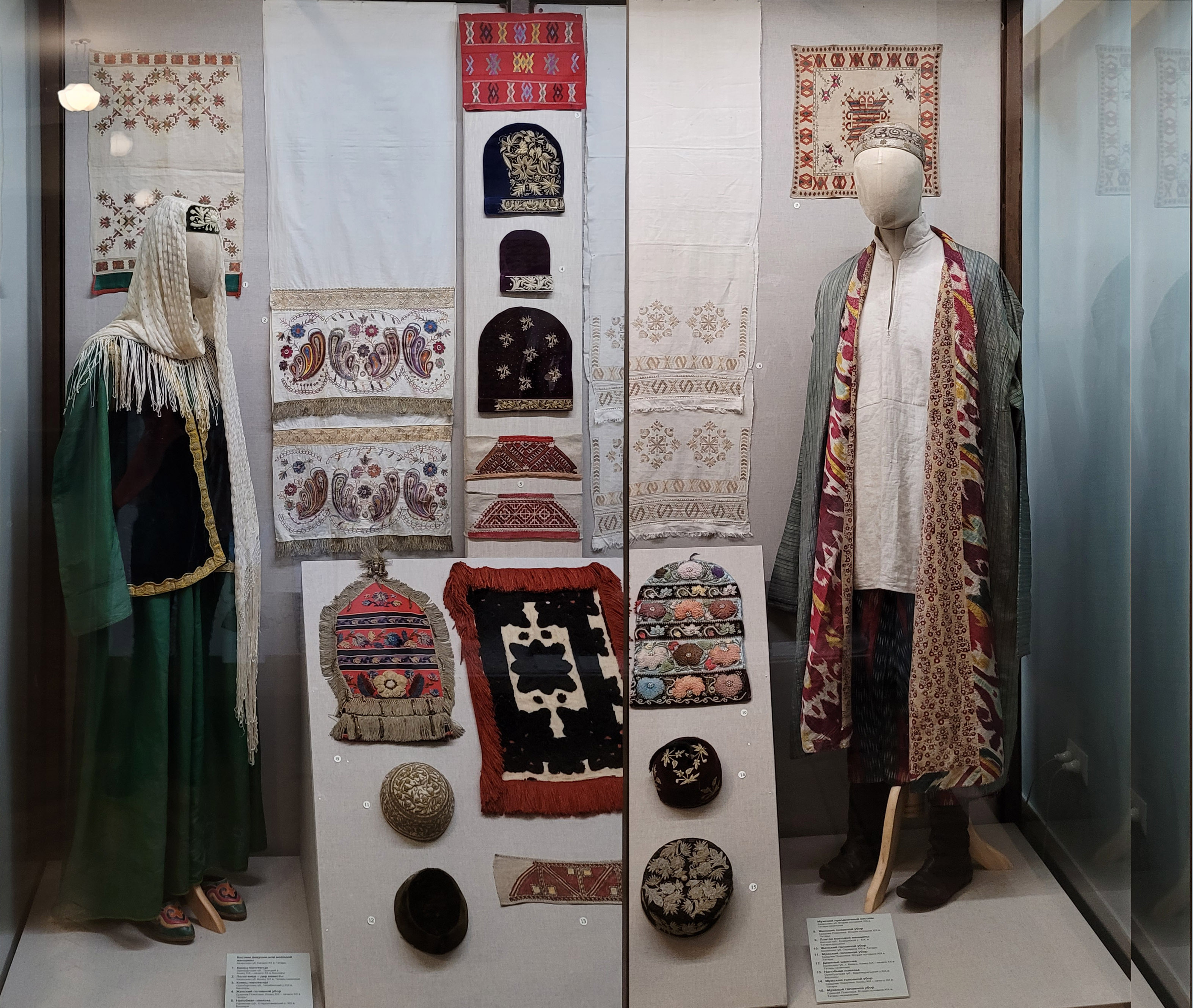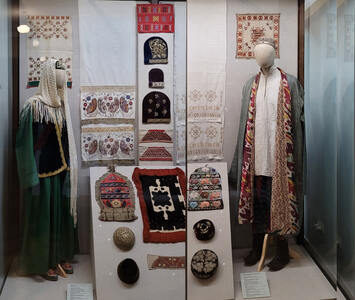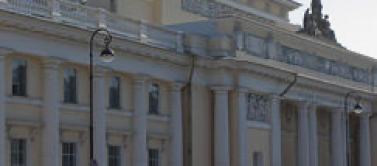Silk in the Traditional Culture of the Peoples of the Volga-Ural region

The Tatars and Bashkirs have been familiar with a variety of silk fabrics since the Middle Ages. It was an expensive commodity that was imported into the region via trade routes crossing the Middle East and Central Asia. Although Sharia did not really approve of men wearing silk, women were free of any such restrictions. Both urban and rural women demonstrated their wealthy social status by wearing silk clothes. In the 18th century and early 20th century, wealthy Tatar women could have entire dresses sewn with a variety of silk fabrics, from brocade to gauze.
Silk threads were especially popular with the general population, being used for the embroidery of clothes and interior decor fabrics such as towels, curtains, and prayer carpets. Breastplates, sashes, hems of women’s dresses, headgear, and outerwear were decorated with silk ribbons and webbing, as well as passementerie.
In the middle of the 19th century, the Tatars adopted a fashion trend for Central Asian semi-silk fabrics of handicraft production, mainly striped bekasab or abr fabrics. Striped fabrics were mainly used for production of men’s robes; trousers and outerwear were sewn with abr fabrics that were also used in the decoration of breastplates and women’s hats by the Kryashen Tatars, too. In the early 20th century, this trend disappeared due to the general urbanization of the traditional culture of Tatars and Bashkirs.
The accessibility of silk materials peaked in the second half of the 19th century with the development of the textile industry in Russia. At this time, satin and velvet became the most common fabrics for sewing sleeveless vests; men’s and women’s headwear, like tubeteika and kalfaks, were also made mainly of velvet. Silk and factory-produced shawls became quite common. For example, by the early 20th century, the most popular element of a festive women’s attire was an openwork shawl made of silk warp-knitted threads.
Girl’s or young woman’s attire
Kazan Governorate. Early 20th century. Tatars
1. Towel’s end. Troitsk County, Orenburg Governorate. Late 19th – early 20th century. Bashkirs
2. Towel – bride’s gift. Kazan Governorate. Late 19th century. Kazan Tatars
3. Towel’s end. Troitsk County, Orenburg Governorate. Late 19th – early 20th century. Bashkirs
4. Women’s headgear. Middle Volga Region. 2nd half of the 19th century. Tatars
5. Headbands. Sterlitamak County, Ufa Governorate. 19th century. Bashkirs
6. Head towel. Chelyabinsk County, Orenburg Governorate. 19th century. Bashkirs
7. Tablecloth-napkin. Troitsk County, Orenburg Governorate. 19th century. Bashkirs
Men’s festive attire
Kazan Governorate. 2nd half of the 19th century. Kazan Tatars
1. Women’s headgear. Middle Volga Region. 2nd half of the 19th century. Tatars
2. Young woman’s headcloth. Elabuga County, Vyatka Governorate. 19th century. Kryashens
3. Women’s headgear. Kazan Governorate. Mid-19th century. Tatars
4. Men’s headgear. Middle Volga Region. 2nd half of the 19th century. Tatars
5. Girl’s hat. Kazan, Kazan Governorate. Late 19th – early 20th century. Kazan Tatars
6. Forehead band. Verkhneuralsk County, Orenburg Governorate. 19th century. Bashkirs
7. Men’s headgear. Middle Volga Region. Late 19th – early 20th century. Tatars
8. Men’s headgear. Middle Volga Region. 2nd half of the 19th century. Kasimov Tatars
From ancient times until the 1930s, the Chuvash and Finno-Ugric peoples of the Volga Region and the Urals wore clothes made of home-made fabrics. Shirts, robes, kerchiefs, women’s breastplates, waist pendants, and headwear made of white artisanal canvas were decorated with counted-thread and double-running stitch embroidery. It focused mostly on silk threads, the shimmer and vibrant colors of which provided the basis for the artistic solutions of embroidered compositions. Many clothing pieces were often additionally decorated at the edges with tassels or fringes, as well as silk threads. Natural dyes were used in silk dyeing until the late 19th century, when they gave way to artificial dyes.
Elements of the festive costumes were often decorated at the seams and lower edges with silk webbing and ribbons, dyed at home or ready-bought at fairs and traveling merchants. They were used mainly in the manufacture of breastplates, forehead bands for women’s headgear, and outerwear trimming. Patches became especially popular in the late 19th century, when the white canvas was replaced by a checkered buntgewebe and factory fabrics.
In the second half of the 19th century, silk and factory-produced shawls became common in the Volga Region.
Izhma Komi most proactively used silk fabrics for women’s festive attire. In the 19th and early 20th centuries, it was traditionally comprised of a shirt and a sarafan, partially or completely made of purchased silk fabrics produced by Russian factories.
Young woman’s festive attire
Mezen County, Arkhangelsk Governorate.
Late 19th – early 20th century. Izhma Komi
1. Women’s wedding headscarf. Krasnoufimsk County, Perm Governorate. Late 19th – early 20th century. Maris
2. Scarf, a part of a bride’s dress. Yadrin County, Kazan Governorate. 19th century. Chuvashes
3. Scarf of a bride or a young woman. Sarapul County, Vyatka Governorate. Late 19th century. Udmurts
4. Waist towel, a part of a bride’s dress. Urzhum County, Vyatka Governorate. Late 19th century – early 20th century. Maris
5. Towel. Middle Volga Region. Late 19th century – early 20th century. Maris
6, 7. Groom’s headscarf. Belebey County, Ufa Governorate. 19th century. Chuvashes
8. Soroka women’s headgear. Middle Volga Region. Late 19th century – early 20th century.
9. Waist pendant. Kozmodemyansk County, Kazan Governorate. Late 19th century. Maris




